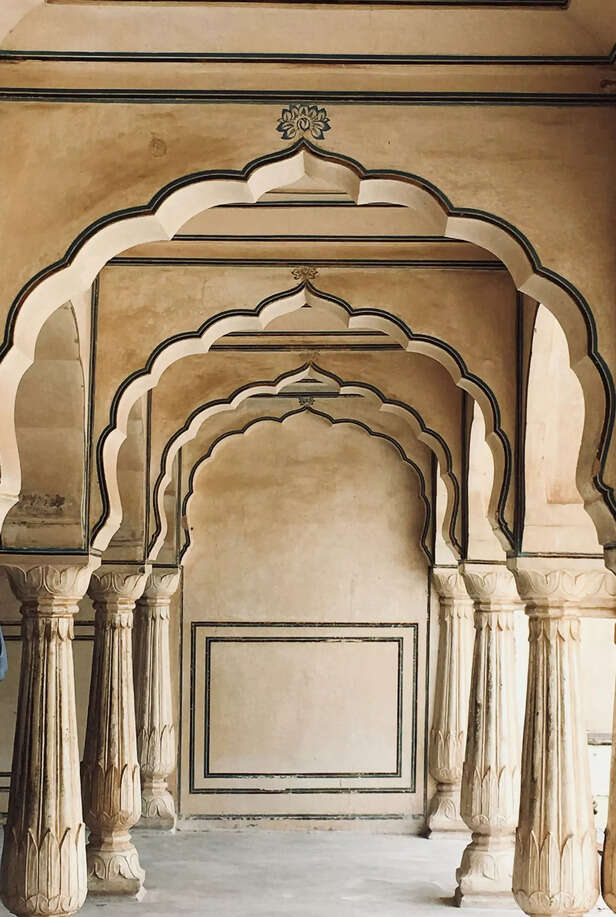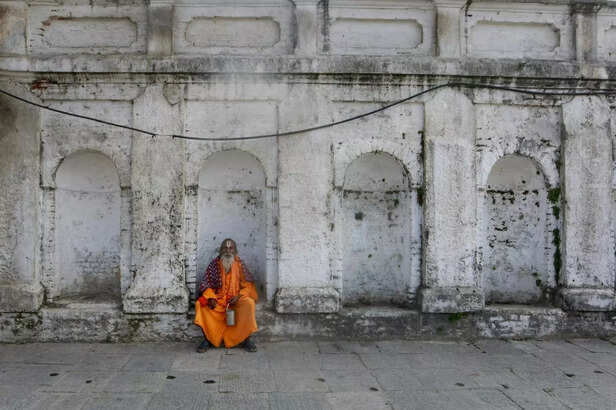Minimalism Was Invented by Indian Sages, Not Silicon Valley
Ankita Rai | Tue, 10 Jun 2025
Minimalism may be trending in modern design, lifestyle, and branding, but its roots are far older and far more Indian than most realize. Long before Silicon Valley repackaged “less is more" into sleek interfaces and productivity hacks, Indian sages lived by the philosophy of detachment, simplicity, and intentionality. From ancient texts to Vedic architecture, India’s cultural history is steeped in minimalist values. As the world catches on, it’s worth asking: Are we rediscovering ancient wisdom under a modern name? Or simply marketing a deeper Indian truth as a Western trend?
( Image credit : Pexels )
Photo:
Minimalism today is often credited to some Western innovator or lifestyle icon, Steve Jobs’ iconic black turtleneck, Apple’s crisp white space, or Marie Kondo’s joyful decluttering. But long before Silicon Valley gave these ideas an aesthetic polish, Indian sages lived them as a daily reality. For them, minimalism was never a style statement it was a sadhana, a spiritual discipline. Ancient Indian philosophies such as Vedanta and Jainism emphasized aparigraha, or non-possessiveness, encouraging people to own less in order to experience more. From the Buddha’s single begging bowl to the yogi’s unstitched robe, simplicity wasn’t just admired it was sacred. Minimalism wasn’t invented in California. It was codified in India, thousands of years ago.
Simplicity as a Spiritual Choice

In Vedic culture, renunciation sannyasa was not limited to a few holy men. It was the final and most exalted phase of human life. The ideal seeker possessed the bare minimum: no wealth, no assets, no attachments. Their only treasure was peace of mind, their home was the forest, and their life’s goal was clarity. Even householders grihasthas were encouraged to live in harmony with their resources, avoid excess, and give to others. Indian scriptures overflow with warnings against indulgence and praise for restraint. As the Bhagavad Gita teaches, "Yuktāhāra-vihārasya" moderation in food, recreation, and lifestyle is the path to liberation. Western minimalism often begins with anxiety, overload, or burnout. Indian minimalism begins with awareness, intention, and peace.
The Design Language of Indian Minimalism

Indian aesthetics are frequently misunderstood as overly intricate or lavish. But a closer look at India’s design heritage reveals a different truth. Historic architecture, like the Ajanta caves or Jain temples, while grand in scale, is built upon foundations of symmetry, restraint, and deep alignment with natural elements, all principles of minimalism. Vastu Shastra, India’s traditional system of architectural design, doesn’t focus on filling spaces. It centers on energy flow, spatial clarity, and directional balance. Empty zones are not voids they’re intentional spaces for life to expand. In that sense, the concept of “white space” isn’t a modern design hack it’s a sacred element. Today’s Indian brands like Fabindia and Raw Mango are embracing this legacy. With earthy hues, handwoven fabrics, and understated storytelling, they are not borrowing from Western minimalism they are returning to their roots.
Decluttering Was a Dharma, Not a Trend

In ancient India, possessions were not merely functional they were karmic. The more you owned, the more mental weight you carried. Minimalism wasn’t about what stayed on your shelf; it was about what didn’t stay in your mind. Ayurveda, India’s traditional science of life, promotes sattvic foods light, fresh, and calming to keep both body and mind clear. Yoga, too, demands detachment not just from objects, but from the results of action. Jainism considers hoarding not just unwise, but unethical. Across traditions, the lesson remains the same: clarity comes when clutter physical, emotional, or spiritual is let go. So when a TED speaker today promotes “intentional living,” they may not realize they are echoing Indian sages who said the same without needing slides or spotlights.
Why the West Needed a Name for What India Lived

In the West, minimalism often emerged as a correction a reaction to consumerism, chaos, and choice fatigue. It is a counter-movement. But in India, minimalism was never a reaction. It was a proactive way of being. It did not arise from industrial fatigue but from philosophical reflection. Contemporary trends such as digital detox, capsule wardrobes, and slow living may seem new. But they mirror practices that Indian households have followed for centuries eating seasonally, wearing handspun cotton, and embracing daily rituals that naturally reduce waste and excess. The same life principles that are now being monetized through apps, books, and online courses were once passed on freely by Indian gurus no subscriptions necessary.
Can India Reclaim Its Minimalist Legacy?

As Indian cities swell and consumerism spreads, a growing number of individuals and creators are returning to minimalism not for nostalgia, but for survival. A younger generation of Indian designers, thinkers, and influencers is adapting ancient concepts to modern life. Design platforms like Design Pataki are reframing Indian minimalism not as “less for the sake of less,” but “less for the sake of alignment.” Indian architects are revisiting vernacular wisdom natural ventilation, inner courtyards, mud finishes, and hand-crafted materials. Fashion and lifestyle influencers are rejecting fast fashion in favor of local textiles, recycled materials, and slower, more intentional living. It’s not a revival. It’s a remembering.
Final Thoughts: Beyond the Hashtag

Indian minimalism was never about sleek desks or monochrome homes. It was about moksha freedom. Freedom from attachment, from desire, from distraction. Today’s minimalism, curated for Instagram and lifestyle blogs, touches only the surface of that deeper, more ethical vision. True Indian minimalism is not aesthetic. It is ethical. It is not about looking clean it’s about living clear. It’s a philosophy that places contentment above consumption, stillness above noise, and purpose above possessions. So next time you read a blog on simplifying life, or hear a brand claim it has “discovered” minimalism, remember Indian sages lived this truth long before hashtags ever existed.
Unlock insightful tips and inspiration on personal growth, productivity, and well-being. Stay motivated and updated with the latest at My Life XP.
Simplicity as a Spiritual Choice

Spiritual journey
( Image credit : Pexels )
In Vedic culture, renunciation sannyasa was not limited to a few holy men. It was the final and most exalted phase of human life. The ideal seeker possessed the bare minimum: no wealth, no assets, no attachments. Their only treasure was peace of mind, their home was the forest, and their life’s goal was clarity. Even householders grihasthas were encouraged to live in harmony with their resources, avoid excess, and give to others. Indian scriptures overflow with warnings against indulgence and praise for restraint. As the Bhagavad Gita teaches, "Yuktāhāra-vihārasya" moderation in food, recreation, and lifestyle is the path to liberation. Western minimalism often begins with anxiety, overload, or burnout. Indian minimalism begins with awareness, intention, and peace.
The Design Language of Indian Minimalism

Minimalism
( Image credit : Pexels )
Indian aesthetics are frequently misunderstood as overly intricate or lavish. But a closer look at India’s design heritage reveals a different truth. Historic architecture, like the Ajanta caves or Jain temples, while grand in scale, is built upon foundations of symmetry, restraint, and deep alignment with natural elements, all principles of minimalism. Vastu Shastra, India’s traditional system of architectural design, doesn’t focus on filling spaces. It centers on energy flow, spatial clarity, and directional balance. Empty zones are not voids they’re intentional spaces for life to expand. In that sense, the concept of “white space” isn’t a modern design hack it’s a sacred element. Today’s Indian brands like Fabindia and Raw Mango are embracing this legacy. With earthy hues, handwoven fabrics, and understated storytelling, they are not borrowing from Western minimalism they are returning to their roots.
Decluttering Was a Dharma, Not a Trend

Dharma
( Image credit : Pexels )
In ancient India, possessions were not merely functional they were karmic. The more you owned, the more mental weight you carried. Minimalism wasn’t about what stayed on your shelf; it was about what didn’t stay in your mind. Ayurveda, India’s traditional science of life, promotes sattvic foods light, fresh, and calming to keep both body and mind clear. Yoga, too, demands detachment not just from objects, but from the results of action. Jainism considers hoarding not just unwise, but unethical. Across traditions, the lesson remains the same: clarity comes when clutter physical, emotional, or spiritual is let go. So when a TED speaker today promotes “intentional living,” they may not realize they are echoing Indian sages who said the same without needing slides or spotlights.
Why the West Needed a Name for What India Lived

Minimalism
( Image credit : Pexels )
In the West, minimalism often emerged as a correction a reaction to consumerism, chaos, and choice fatigue. It is a counter-movement. But in India, minimalism was never a reaction. It was a proactive way of being. It did not arise from industrial fatigue but from philosophical reflection. Contemporary trends such as digital detox, capsule wardrobes, and slow living may seem new. But they mirror practices that Indian households have followed for centuries eating seasonally, wearing handspun cotton, and embracing daily rituals that naturally reduce waste and excess. The same life principles that are now being monetized through apps, books, and online courses were once passed on freely by Indian gurus no subscriptions necessary.
Can India Reclaim Its Minimalist Legacy?

Minimalism
( Image credit : Pexels )
As Indian cities swell and consumerism spreads, a growing number of individuals and creators are returning to minimalism not for nostalgia, but for survival. A younger generation of Indian designers, thinkers, and influencers is adapting ancient concepts to modern life. Design platforms like Design Pataki are reframing Indian minimalism not as “less for the sake of less,” but “less for the sake of alignment.” Indian architects are revisiting vernacular wisdom natural ventilation, inner courtyards, mud finishes, and hand-crafted materials. Fashion and lifestyle influencers are rejecting fast fashion in favor of local textiles, recycled materials, and slower, more intentional living. It’s not a revival. It’s a remembering.
Final Thoughts: Beyond the Hashtag

Minimalism
( Image credit : Pexels )
Indian minimalism was never about sleek desks or monochrome homes. It was about moksha freedom. Freedom from attachment, from desire, from distraction. Today’s minimalism, curated for Instagram and lifestyle blogs, touches only the surface of that deeper, more ethical vision. True Indian minimalism is not aesthetic. It is ethical. It is not about looking clean it’s about living clear. It’s a philosophy that places contentment above consumption, stillness above noise, and purpose above possessions. So next time you read a blog on simplifying life, or hear a brand claim it has “discovered” minimalism, remember Indian sages lived this truth long before hashtags ever existed.
Unlock insightful tips and inspiration on personal growth, productivity, and well-being. Stay motivated and updated with the latest at My Life XP.
Frequently Asked Questions (FAQs)
- Was minimalism really part of ancient Indian culture?Yes, minimalism was deeply embedded in Indian spiritual traditions like Vedanta, Jainism, and Yoga as a way of life rooted in simplicity and detachment.
- How is Indian minimalism different from Western minimalism?Indian minimalism is spiritually driven and proactive, while Western minimalism often arises as a response to excess or burnout.
- Are modern Indian brands influenced by traditional minimalist values?Yes, many Indian brands now consciously reflect traditional minimalism through sustainable materials, simple design, and mindful storytelling.










